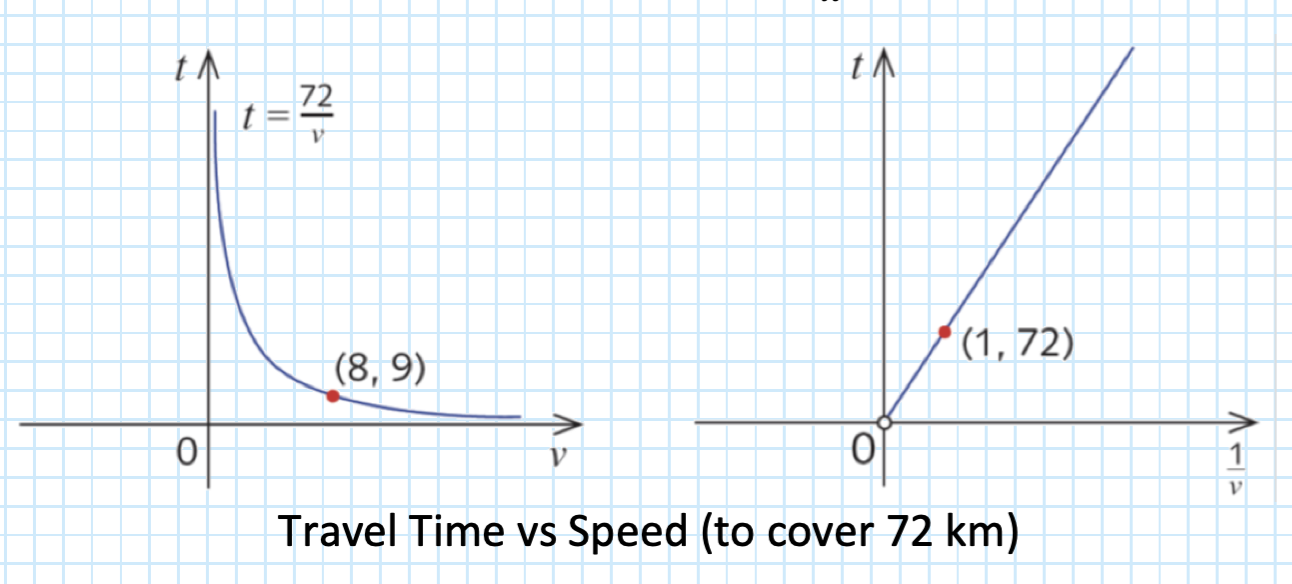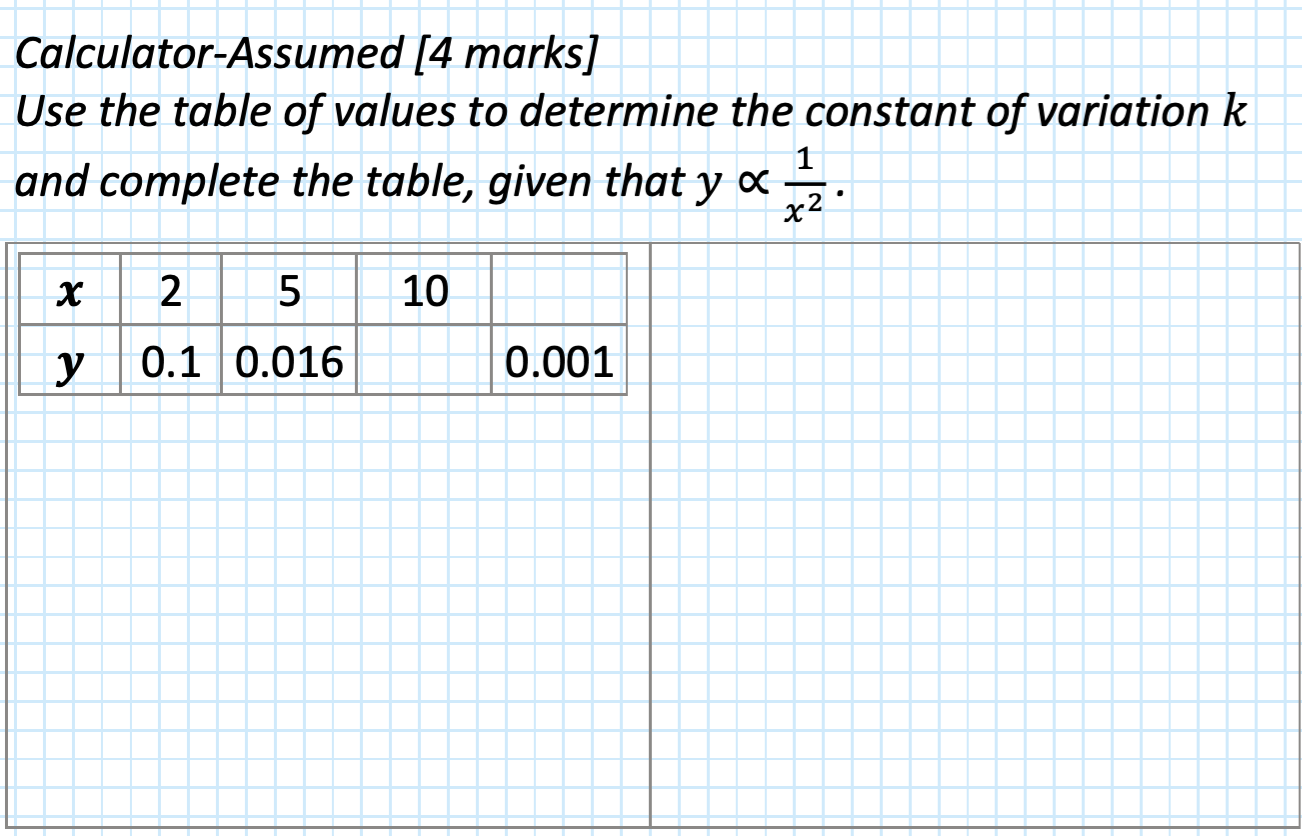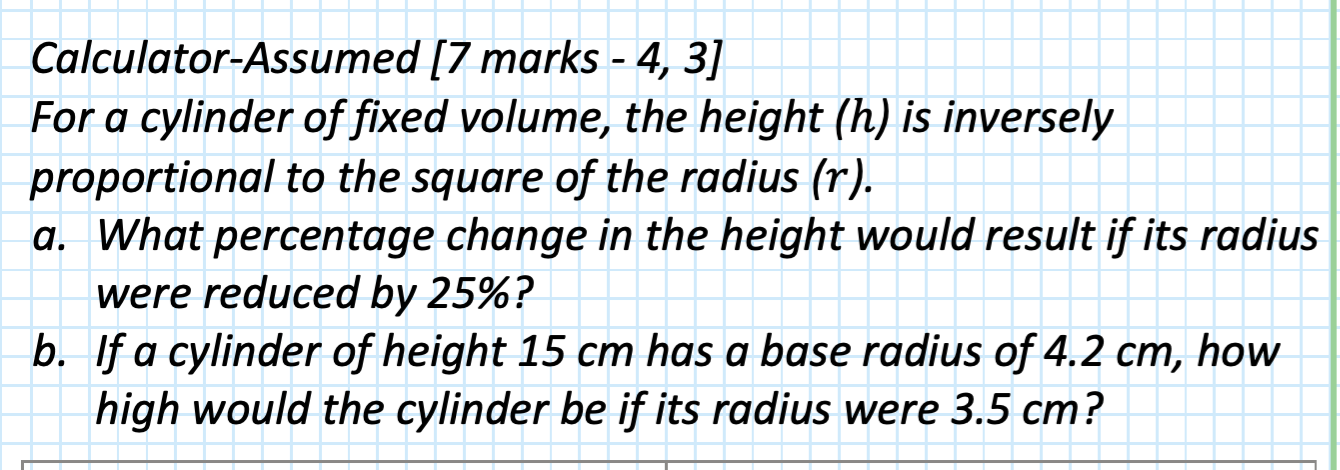recap: direct proportion §
- two quantities vary proportionately if one is always a constant multiple of the other.
- something something more goes here
inverse proportion §
- two quantities are inversely proportionate if one is always a constant multiple of the inverse of the other.
- e.g. if you travel 72km at a constant speed, then your travel time (t hours) is inversely proportional to your speed (v km/h), since t is always 72 times the inverse of v (i.e. t=v72
- “y is proportional to x1” can be written as: y∝x1
- this can then be written as an equation as follows: y=xk
- where k is the constant of proportionality.
- From the equation, you can observe the following:
- as x increases, y decreases (if k is positive), but not at a constant rate (i.e. not a straight line)
- the constant of proportionality can be found as follows: k=xy
- this can also be used as a test - if xy is constant for all (x,y), then x and y are inversely proportional.
graphing inverse proportion §
- in an inversely proportional relationship:
- the graph of y against x is a curve called a hyperbola.
- the graph of y against x1 is a straight line with a gradient k that approaches the origin (excluded since x1=0)

- more generally, if y∝xn1, then:
- y=xnk
- the graph of y against xn1 is a straight line with a gradient k, that approaches the origin (since xn1=0)
practice §

- y∝x21
- y=x2k
- SUB ( 2, 0.1):
- y=x20.4
- SUB X = 10
- SUB Y = 0.001 - x2=0.0010.4=400 - x=20

- h=r2k
- let r1=n
- let r2=0.75n
- h1=r12k=n2k
- h2=r22k=(0.75n)2k
- =0.5625n2k=0.56251×n2k
- =1.778n2k=1.778h
- INCREASE BY 77.8%
- SUB (4.2, 15):


